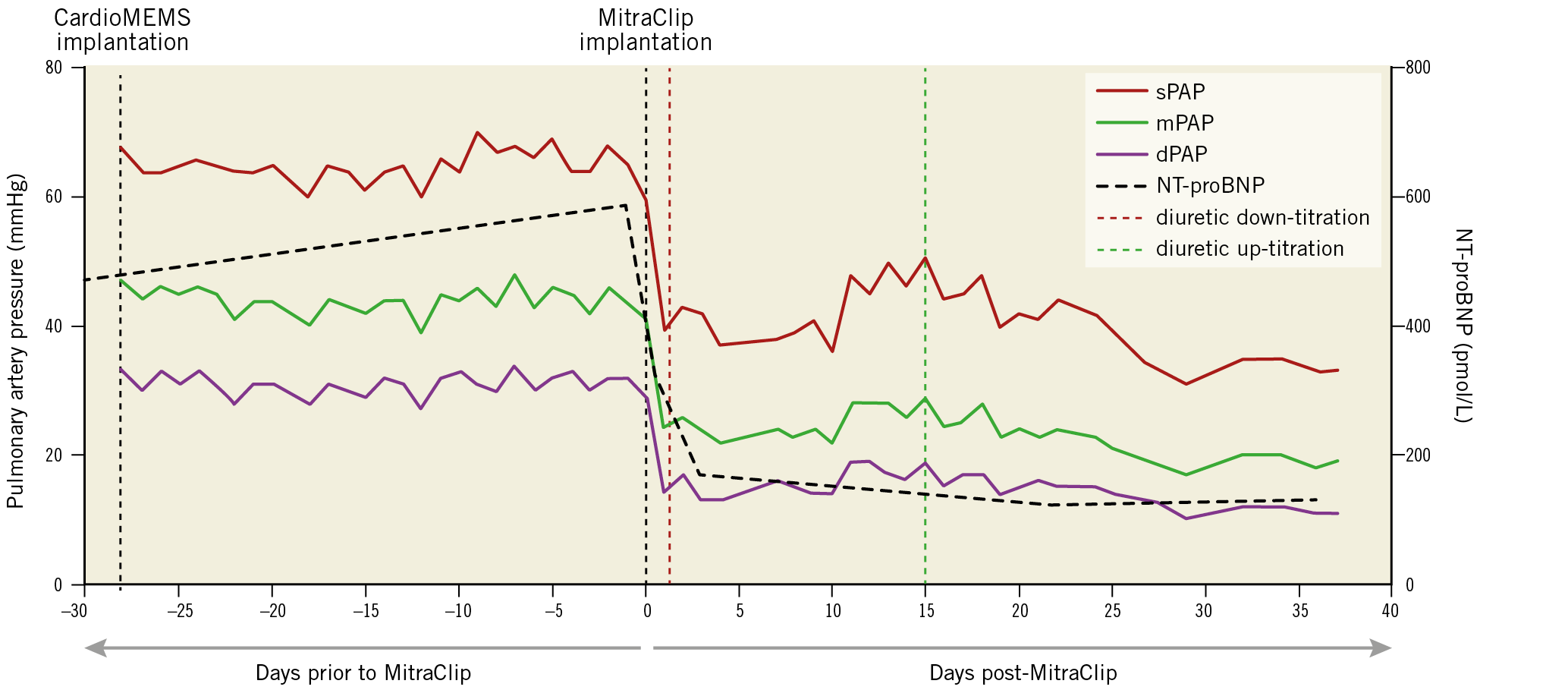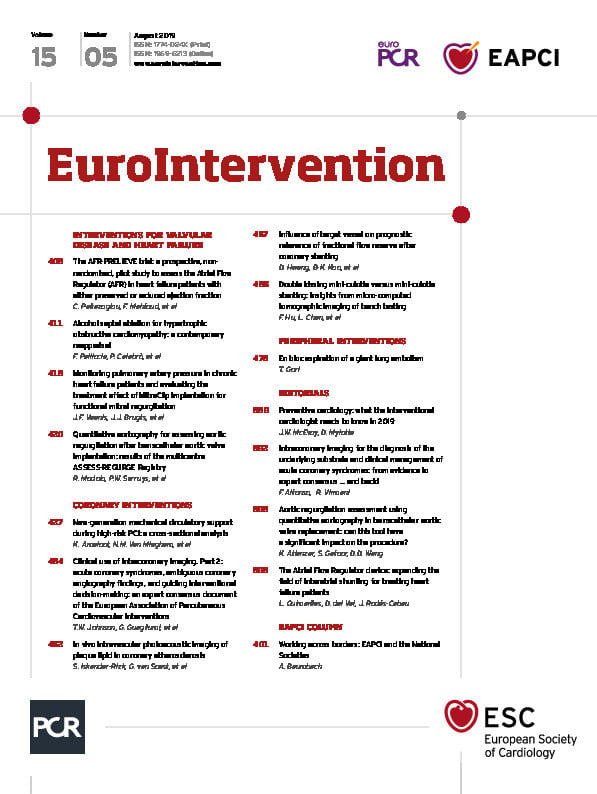

Figure 1. Pre- and post-MitraClip daily PAP readings.
In chronic heart failure (HF) patients, functional mitral valve regurgitation (FMR) is a common finding and is associated with worse outcome. The position of the MitraClip™ (Abbott Vascular, Santa Clara, CA, USA) as a therapeutic option is still debated after the publication of the MITRA-FR and COAPT trials, showing conflicting results.
A 51-year-old male, with a history of severely dilated, non-ischaemic cardiomyopathy, severe FMR, actively on the heart transplant (HTx) waiting list, remotely monitored with the CardioMEMS™ sensor (Abbott Vascular), developed persistent elevated pulmonary artery pressures (PAPs) (mean 42 mmHg), despite high-dose diuretics, which were limited by prerenal insufficiency. Swan-Ganz measurement demonstrated no reversibility of pulmonary hypertension (PH) (mean PAP [mPAP] 42 to 35 mmHg), wedge pressure (23 to 22 mmHg) or transpulmonary gradient (TPG) (19 to 13 mmHg) after intravenous administration of nitroglycerine at maximal tolerated dosage (due to a significant drop in systemic blood pressure). The Heart Team judged that the patient was not a good candidate for an HTx at this stage due to the high pressures.
In this setting, it was unclear how much the severe FMR contributed to the PH. The Heart Team decision was made for a MitraClip implantation. On the day of implantation, mPAP was 45 mmHg. After successful implantation of two MitraClips, FMR was reduced to mild on echocardiography, and mPAP dropped to 32 mmHg. In the following days, mPAP dropped to 23 mmHg (Figure 1). NT-proBNP decreased from 579 pmol/L (normal <14 pmol/L) pre implantation to 165 pmol/L four days post implantation. Kidney function (estimated glomerular filtration rate [eGFR]) improved from 62 ml/min to 73 ml/min and, based on the normalised PAPs, the diuretic dosage was decreased, and the patient was discharged in a good clinical condition.
During follow-up, the CardioMEMS showed a gradual rise of PAP, on which the diuretic dosage could be titrated again to maintain normal PAP at the normal home setting.
A Swan-Ganz measurement was repeated approximately 1.5 months after MitraClip implantation (mPAP 19 mmHg, wedge pressure 12 mmHg, TPG 7 mmHg), confirming the CardioMEMS readings. Subsequently, the patient returned to active status on the HTx waiting list.
The CardioMEMS offers valuable and unprecedented information to the treating physician to monitor the effects of therapy modifications, such as medication or dosage changes1, or valvular interventions such as a MitraClip implantation. This unique “at home” haemodynamic feedback for the treating clinicians allows further therapy optimisation.
Conflict of interest statement
N.M. Van Mieghem has received research grant support from Boston Scientific, Medtronic and Abbott, and sits on the advisory board of PulseCath B.V. The other authors have no conflicts of interest to declare.

